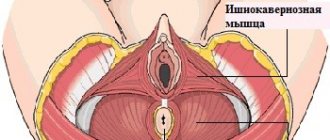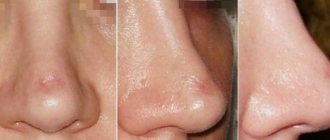In the literature you can find a description of more than 400 methods of surgical treatment of hallux valgus. In the past, podiatrists combated hallux valgus by surgically removing the articular heads, which resulted in severe impairment of foot function. Therefore, today doctors prefer to perform less traumatic operations.
X-ray.
What is hallux valgus? Initially, Hallux Valgus causes only the big toe to become bent. As a result, a person increases the load on the heads of the 2-4 metatarsal bones, which leads to hammertoe deformity of the II-V fingers. Timely surgical treatment helps to avoid this unpleasant phenomenon.
When is surgery to remove a bunion on the foot prescribed?
The operation is prescribed after a doctor’s examination and diagnostics. At the initial stages of the development of hallux valgus, conservative methods can be used for treatment, however, if a protruding lump appears, the doctor will recommend removing the growth. Mandatory surgery is indicated in the presence of the following symptoms:
- development of the inflammatory process in the area of the lump, redness of the skin, swelling and hyperthermia;
- severe pain not only when walking, but also when the patient is at rest;
- the curvature of the big toe is more than 50 degrees, which leads to deformation of the remaining toes;
- a painful calloused formation has formed in the area of the lump, bleeding and inflamed;
- high joint density;
- development of pronounced flat feet.
If the symptoms listed above are absent, but the lump causes aesthetic discomfort to the patient, surgery may also be prescribed after consultation with a doctor. Experts recommend performing surgery to remove a growth on the foot in the early stages of formation, preventing the development of serious complications.
Preparing for surgery
After a visual examination of the pathological area, the specialist prescribes x-rays of the foot from different sides. In case of advanced pathology and severe curvature of the thumb, magnetic resonance imaging of the lower limb may additionally be performed. This diagnostic method allows you to identify hidden defects in the joint and bone tissue of the foot, and diagnose articular arthrosis, which is necessary for choosing a surgical method. A densitometry study is also carried out, which can detect the presence of osteoporosis.
In preparation for the operation, the patient is also prescribed a biochemical and clinical blood test, a test for sugar and coagulation. Additionally, a general urine test, fluorography, electrocardiogram, as well as tests for HIV, Syphilis, Hepatitis B and C are performed.
Price
In the GarantKlinik network of clinics, classical scalpel surgery is not performed. This method is considered obsolete. It was replaced by laser removal. Laser bone removal has almost no contraindications, the rehabilitation period is reduced to a minimum, as is surgical intervention.
The cost of laser removal of hallux valgus is 70 thousand rubles. The operation can be performed on both feet at the same time. In this case, the cost of the intervention will be 120 thousand rubles. The cost of surgery includes removal of the growth using modern medical equipment, all auxiliary materials and medications necessary for the operation, a three-day hospital stay, consultations and examinations by specialized specialists.
Cost of foot surgery
The cost of surgical treatment depends on the degree of deformity, the type and complexity of the operation, the level of the medical institution and the qualifications of the specialists working there. Removal of exostosis in Moscow costs from 40,000 to 50,000 rubles. Prices for reconstructive operations start at 70,000 rubles. Please note that the price does not include preoperative examination, specialist consultations, consumables and rehabilitation.
If you want to have surgery abroad, pay attention to the Czech Republic. Treatment there will cost you in euros including rehabilitation. In Germany and Israel, the same operation will cost much more.
Indications and contraindications for surgery
The operation is indicated for adult patients experiencing hallux valgus deformity and experiencing pain, discomfort and disorders of the articular system. Children and adolescents have a great chance of correcting the deformity with conservative treatment methods. In adulthood, deformity of the metatarsophalangeal joint of the big toe can only be corrected surgically.
Surgical removal of a bunion is a difficult and traumatic procedure with a long rehabilitation period. In this regard, the procedure has a number of contraindications:
- atherosclerotic lesions of the vessels of the lower extremities;
- diabetic foot syndrome (numbness of the feet, hardening of the skin and nails, goosebumps, decreased skin sensitivity);
- purulent infections;
- severe diseases of the cardiovascular system;
- pathologies of hematopoietic organs;
- pathologies of the musculoskeletal system;
- oncological diseases (cancer);
Before prescribing a surgical operation and choosing a method for performing it, the doctor must make sure that there are no contraindications listed above.
Factors that increase the risk of developing Hallux Valgus
Internal factors
- heredity
- ligamentous weakness
- joint diseases
- transverse flatfoot
- neurological disorders
- endocrine system problems
External factors
- shoes with too narrow toes
- high heel shoes
- overweight
Women suffer from Hallux Valgus 10 times more often than men due to the characteristics of the endocrine system and addiction to uncomfortable shoes with narrow toes and too high heels
Symptoms and stages
Types of surgical operations to remove hallux valgus
Modern technologies make it possible to remove growths on the foot using minimally invasive laser techniques and classical surgical methods. The second option is highly traumatic and has a relatively long rehabilitation period. In total, more than 200 different techniques for removing hallux valgus are used in surgery. The choice of a specific technique is determined by a number of factors - from the severity of the deformity to the condition of the patient himself.
Surgical removal of a bunion on the big toe, depending on the method of gaining access to the bone tissue, is divided into two main types:
- Open method - in this case, access to the articular and bone structures is achieved through a deep incision of the soft tissues, right down to the growth, which is subsequently removed. At the same time, the surgeon has a full overview of the operation area.
- Closed method - in this case, a small incision is made in the skin, through which microsurgical instruments are inserted, with the help of which further manipulations are performed. Operations of this type are less traumatic, but require extensive experience and highly qualified surgeons.
The demand for the closed method of surgery is explained by its advantages - low trauma, quick recovery, smaller, more aesthetic postoperative scars, the possibility of using local or epidural anesthesia instead of general anesthesia. All this allows us to reduce the number of possible postoperative complications and negative consequences for the patient.
Methods for removing a protruding bone on the foot
Depending on the degree of curvature of the thumb and the size of the resulting bone growth, the surgeon selects the most effective method of performing the operation. The most commonly used methods for correcting pathology are:
- Extotic resection - the bone growth formed in the area of the beginning of the first bone of the metatarsus and phalanx of the big toe is removed. The finger bone itself and the joint remain intact;
- Hochman osteotomy - during this intervention, the surgeon removes part of the first metatarsal bone along with the pathological growth. Moreover, after the completion of the rehabilitation period, the mobility of the finger decreases somewhat, but is not completely lost;
- McBride operation - during this operation, after removing the growth, the surgeon additionally shortens the stretched muscle. This operation allows you to completely restore the functionality of the foot, but can only be performed for mild foot deformation and for young patients who do not have concomitant pathologies;
- Removal according to Wreden-Mayo - the technique is designed to treat patients with severe hallux valgus and toes, and is most often performed on elderly people. This involves removing part of the first metatarsal bone or the first digital phalanx;
- Reconstruction using the CITO method - this technique involves the complete replacement of a joint with a prosthesis, previously created specifically for the patient from the patient’s own tissues.
Arthrodesis for hallux valgus deformity
Arthrodesis is the complete immobilization of the metatarsal-wedge joint by connecting the bones that form it. The operation is performed on persons with transverse-spread deformity and Hallux Valgus with hypermobility of the first metatarsocuneiform joint.
Test to detect pathological mobility:
- hold the II-V metatarsal bones with the fingers of one hand;
- with the other hand, take the first metatarsal bone and try to move it in the dorsal-plantar direction;
- look how much you managed to move it;
- displacement of the bone by more than one sagittal dimension of the thumb indicates the presence of hypermobility.
Arthrodesis is the most traumatic operation, involving complete removal of the metatarsocuneiform joint. It is done only as a last resort when other methods are ineffective.
How is the operation performed?
Regardless of the chosen technique, the operation is carried out in several stages. The intervention begins with pain relief. The type of anesthesia is determined individually by a specialist, depending on the chosen technique and the patient’s condition. Next, a small incision is made on the inner surface of the phalanx of the thumb. Having gained access to the capsule of the first metatarsophalangeal joint, the doctor carefully dissects it, providing access for further surgical manipulations.
When access to the tissue is obtained, an exostosisectomy is performed - removal of the pathological bone growth. If the technique involves removing part of the finger bone, the trauma surgeon saws it down and changes the axis of the deformed area of the finger. To consolidate the results obtained, arthrodesis is performed at the next stage of the operation. This medical term refers to the fixation of tissue using metal screws and other special devices. The surgical intervention ends with suturing the capsule and soft tissues.
Advantages and disadvantages of surgical treatment of hallux valgus
The main advantage of the surgical method is the availability of the operation. Also, this method is universal and allows you to cope with foot pathologies of any severity. Compared to attempts at conservative treatment of hallux valgus, the surgical method is truly effective and allows you to get rid of the bunion on the foot forever.
The disadvantages of this method include high trauma, the presence of restrictions and contraindications for surgery, and a long and difficult recovery period.
Surgery for hammertoe deformity
As is known, in the later stages of Hallux Valgus it is combined with hammertoe deformity of the II-V fingers. It looks unattractive and negatively affects the functions of the foot. To correct it, a number of surgical interventions are used.
These include:
- Closed redressing.
The essence of the technique is to forcibly correct the defect non-surgically. Unfortunately, redressal has little effect, and relapses often occur after it. - Tenotomy or tendon transposition.
Operations are performed on the ligaments of the foot. Their skillful intersection or movement allows you to correct hammertoe deformity. - Bone resection.
During surgery, doctors excise the base of the middle or head of the main phalanx. This allows you to get rid of excess bone mass and eliminate deformation. - Weil or Wilson osteotomies.
They resemble Scarf and Chevron operations, but are performed on the II-V metatarsal bones. Surgeons cut them open and then fix the bone fragments with titanium screws.
Osteotomy is most effective in treating hammertoe deformity. This is what is performed in the most severe and advanced cases.
Rehabilitation
For some time after surgery, the patient is strictly forbidden to put any weight on the injured leg. For the first days, this is ensured by bed rest, after which the patient is allowed to walk using crutches. This can last from several weeks to several months, depending on the speed of tissue healing, the age of the patient and the presence of concomitant pathologies.
To speed up the healing process and restore full mobility of the foot, during the rehabilitation period experts recommend following a special regime for several months, including the following measures:
Taking medications - during the first time after surgery, the doctor prescribes the patient to take antibacterial, anti-inflammatory and painkillers;
Exercise therapy – you can begin therapeutic exercises for the foot only after the postoperative swelling of the tissues has passed. The exercise therapy complex is aimed at accelerating tissue healing, intensifying blood circulation and training the muscles and joints of the foot. Smooth flexion and extension of the toes are considered mandatory exercises in physical therapy;
Selection of the right shoes - the patient is advised to wear only properly selected, soft orthopedic shoes without heels, made from natural “breathable materials”. In addition to shoes, orthopedic insoles can be used to transfer the load from the forefoot to the heel, and special devices for separating the toes.
By strictly following the rules of the rehabilitation period, a few months after the operation the patient can return to an active lifestyle.
RESTORATION OF A DAMAGED MOBILE JOINT OF THE LEG
The practice of restoring the suspensory joint in the leg depends entirely on the location of the injury and the type of injury. Tactics can be conservative or specific.
In the first case, we are usually talking about tendon sprains. Here the main attention is paid to tissue nutrition, activation of natural processes of reconstruction of the tendon structure. To prevent tendinitis, tendinosis, and tenosynovitis, NSAIDs are prescribed. For severe pain, analgesic injection blockades can be performed.
Repairing tendon ruptures
Invasive therapy is relevant for more serious damage. It involves reconstruction of the tendon with excision of the fiber ends of the threads and their replacement with prostheses/transplanted materials.
In the first steps of rehabilitation after surgery in the area of damage to the tendon of the leg, the following are highly recommended:
- physiotherapy methods;
- health-improving gymnastics (with a verified calculation of the load on the tendon);
- massage therapy after injury;
- regular fixation of the joint in which the tendon is damaged;
- contrast aqua procedures and much more.
The period of reconstruction and rehabilitation of the leg after injury directly depends on the severity of the injury and can last from 2–3 weeks to 6 months.
Laser technique for removing a protruding bone on the foot
The safest, modern and minimally invasive way to remove hallux valgus is laser removal of the growth. The laser technique is carried out using innovative laser equipment, which allows you to remove only pathological tissue layer by layer, without affecting the healthy structures of the foot. In addition, for laser removal there is no need to carry out extensive tissue dissection - it is enough to make a small incision to gain access to bone and joint tissues.
The advantages of laser techniques over surgical ones are noted by all experts in this field:
- low trauma and preservation of the integrity of healthy tissues;
- the possibility of performing the operation under spinal and intravenous anesthesia, without the use of general anesthesia that is hazardous to health;
- no risk of bleeding due to coagulation of blood vessels under the influence of a laser beam;
- no risk of infection of the wound surface during the operation;
- acceleration of tissue regeneration;
- reduction of pain intensity during the recovery period;
- the ability to walk without crutches already on the second day after removal of the growth;
- complete restoration of functional activity of the foot.
Treatment options
CONSERVATIVE TREATMENT
At stage 1
the disease is successfully treated with conservative methods, using physiotherapy.
Also, the patient is recommended to moderate physical activity, normalize weight, and wear orthopedic shoes, or, as an option, just comfortable shoes, using pads and foot pads that relieve the load on the problem joint.
SURGICAL TREATMENT
Disease at stages 2 and 3
can only be treated surgically.
During the operation, the orthopedic surgeon removes excess bone and joint tissue and removes the deformity of the first metatarsal bone - the patient is completely and forever rid of the problem.
The duration of the operation is 1 hour.
Doctor's answers to common questions
Will I be able to wear heels after bunion surgery?
If the operation is performed using the classical surgical technique, the patient is recommended to wear comfortable orthopedic shoes without heels throughout his life. After complete recovery, it is allowed to wear heels for a short time, no more than 2-3 hours. If the operation is performed using a laser, there are no restrictions on wearing shoes, and the functional activity of the foot is not limited.
I have a protruding bone near my thumb. It doesn't hurt, but I don't feel comfortable wearing my usual shoes. Is it possible to avoid surgery?
If the bone protrudes so much that it causes discomfort when wearing shoes, most likely the second stage of hallux valgus is developing. Unfortunately, a conservative treatment method will be ineffective, and by postponing surgery indefinitely, the patient risks aggravating the situation and provoking the development of various diseases of the musculoskeletal system.
Reasons leading to amputation
Amputation of a toe is carried out strictly according to indications, when there is confidence that tissue necrosis or gangrene has occurred.
The operation is preceded by pathological processes leading to prolonged ischemia (poor circulation), hypoxia (oxygen starvation), and vascular thrombosis.
Pathologies leading to gangrene and ultimately amputation:
- diabetes mellitus and its accompanying complication – diabetic foot;
- blockage of a vessel by a thrombus;
- atherosclerosis.
Among all diseases, diabetes mellitus occupies a leading position.











